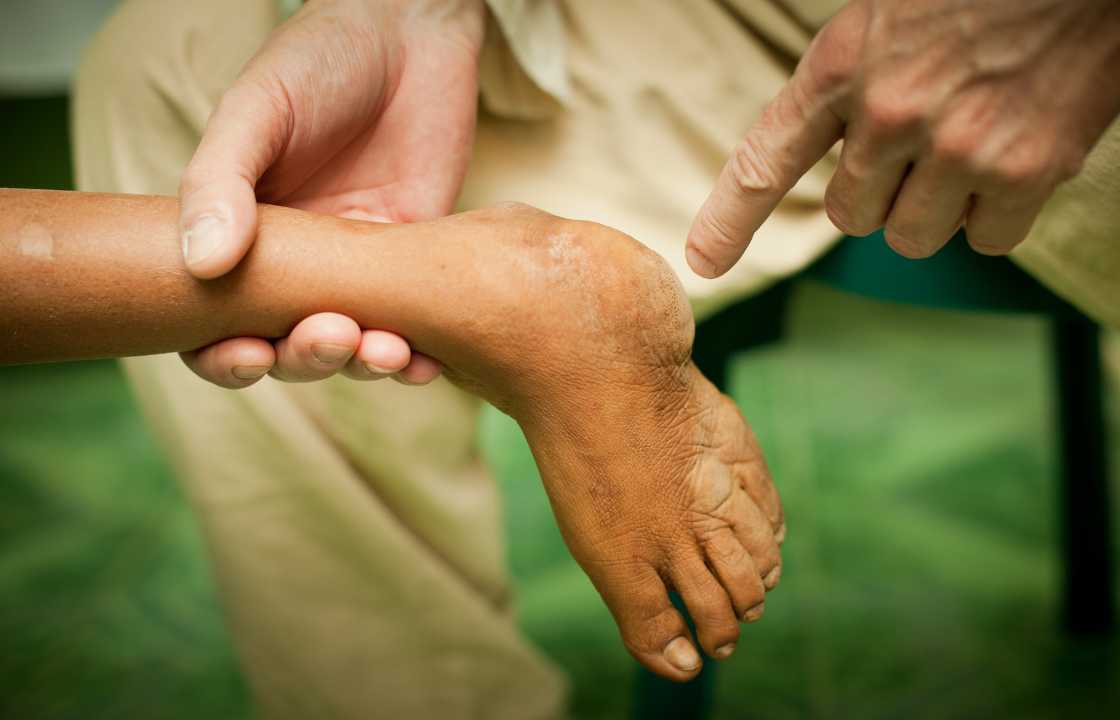Syndrome
What Is Clubfoot?
Clubfoot is a relatively common congenital condition, affecting about one in every 1,000 newborns. This condition is characterized by a foot that exhibits an abnormal position and shape, often pointing downward, sometimes with toes curled inward, appearing sideways, or even nearly upside down. The medical term for this condition is talipes equinovarus, but it is commonly referred to as clubfoot.
It is important to note that clubfoot does not cause pain in infants, but if left untreated, it can lead to difficulties in walking, often resulting in a limp. However, in most cases, clubfoot can be effectively corrected, and its impact on a child’s life can be minimized.
Prevention and Risk Factors
Clubfoot occurs when the tendons and muscles in and around the foot are shorter than they should be. While the exact cause remains unknown, several factors increase the likelihood of a child being born with clubfoot:
1. Gender: Approximately two-thirds of babies with clubfoot are male.
2. Family History: Babies who have a parent or sibling with clubfoot are twice as likely to develop the condition.
3. Lifestyle Choices: Smoking or using illegal drugs during pregnancy can increase the risk of a baby being born with clubfoot.
4. Other Birth Defects: Clubfoot may be associated with other congenital conditions, such as spina bifida.
5. Amniotic Fluid Levels: Inadequate levels of amniotic fluid surrounding the baby in the womb can raise the risk of clubfoot.
Symptoms and Diagnosis
Clubfoot is typically easy to identify shortly after birth. Some common symptoms and signs include:
- The affected foot is in an abnormal position, often pointing downward, with curled toes or appearing sideways or upside-down.
- The clubfoot may be smaller than a normal foot, sometimes by up to a half-inch.
- Underdeveloped calf muscles on the affected leg.
- Limited range of motion in the affected foot.
Most physicians can diagnose clubfoot through a visual examination of the newborn. In some cases, clubfoot may even be detected during a late-pregnancy ultrasound.
Treatment Options
The treatment of clubfoot is essential for ensuring proper development and function of the affected foot. Early intervention is crucial to prevent delays in walking and standing. Treatment options for clubfoot include:
1. Casting: This is the most common treatment approach. Babies’ tendons are highly flexible, allowing doctors to gently maneuver the clubfoot into the correct position. They will then apply a cast to maintain the corrected alignment. Over several weeks or months, the doctor gradually repositions the foot with a new cast at each visit. X-rays may be taken to monitor bone alignment. After casting, the baby may need a special brace or shoe to maintain the corrected position, especially until they begin to walk.
2. Surgery: In cases where tendons and other tissues are too short to be corrected by casting alone, surgery may be required. Typically performed between 6 months and a year of age, surgery aims to lengthen tendons and adjust the foot to a more normal position. Following surgery, the baby will require a cast to keep the foot in the correct position, followed by a brace or special shoe for about a year to prevent the foot from reverting to its original position.
The choice between casting and surgery depends on the specific characteristics of the clubfoot and the recommendations of the medical team.
Prognosis and Follow-Up
The long-term outlook for children with clubfoot is, on the whole, positively encouraging. However, it’s important to understand that the prognosis can vary depending on several factors, including the initial severity of the clubfoot condition, the chosen treatment method, and the child’s unique response to the treatment. Early intervention and the ongoing commitment to consistent follow-up with healthcare providers play a pivotal role in shaping these outcomes.
As the child continues to grow and develop, regular check-ups become an integral part of their healthcare routine. These check-ups serve as opportunities for healthcare professionals to monitor the progress, address any emerging concerns, and potentially make adjustments to the brace or shoe to ensure that the foot maintains the correct position. This phase of ongoing care is indispensable in achieving the best long-term results for the child with clubfoot.
Parents play a crucial role during this journey, as they need to remain vigilant and attentive to their child’s development. This includes being watchful for any signs of relapse or potential issues, no matter how subtle, and promptly communicating these concerns with their healthcare providers. This collaborative effort between parents and healthcare experts ensures that the child’s clubfoot is managed effectively and that any challenges that may arise are addressed promptly, ultimately fostering a future filled with increased mobility and a high quality of life.
In Conclusion
Clubfoot is a congenital condition that, fortunately, only affects a relatively small percentage of newborns. Although the precise cause of clubfoot remains elusive, what is clear is that early diagnosis and timely intervention are of paramount importance in guaranteeing the proper development and optimal function of the affected foot. With dedicated medical care and specialized treatments like casting or surgical procedures, the majority of clubfoot cases can be effectively and successfully corrected, ultimately providing children with the opportunity to grow up and lead healthy, active lives.
Parents play a vital role in this journey towards corrective measures for their child’s clubfoot. They are strongly encouraged to seek prompt medical advice, which can pave the way for an accurate diagnosis and the development of a personalized treatment plan tailored to their child’s unique needs. By diligently following the recommended treatment protocols, parents can contribute significantly to ensuring the best possible outcomes for their child’s clubfoot, setting the stage for a future marked by enhanced mobility, reduced discomfort, and the opportunity to fully participate in a wide range of activities.

